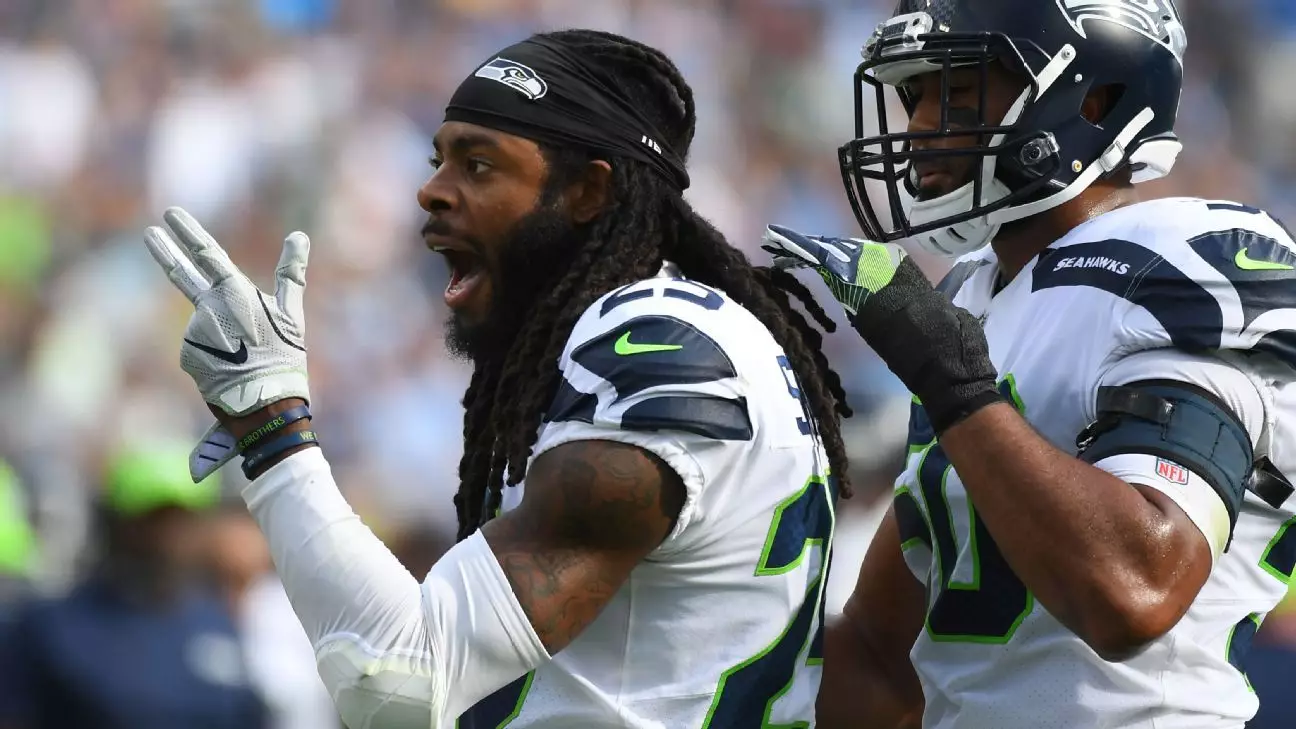In a shocking turn of events, the once-tight-knit world of professional sports has revealed a sinister underbelly, where high-profile athletes are increasingly becoming prime targets for burglaries. The recent case in Seattle involving 21-year-old Earl Henderson Riley IV is emblematic of a troubling trend that has seen organized crime groups specifically targeting homes of renowned sports figures. This pattern raises critical questions about security, safety, and the societal implications of fame in the world of professional athletics.
The case involves a series of brazen break-ins at the residences of notable sports stars, including MLB players Louis Castillo and Julio Rodriguez, as well as former NFL cornerback Richard Sherman. The sheer audacity of these crimes—where thieves allegedly made off with hundreds of thousands of dollars in luxury goods—underscores the vulnerability that comes with fame. These athletes, who are supposed to feel safe within their own homes, are being robbed of that sanctity, sparking outrage among fans and advocates for change.
Profiling the Perpetrators: Who Targets Athletes?
It’s crucial to examine who pulls the strings in these crimes. Riley has been described as the ringleader connected to a network that emigrates from opportunistic thieves to organized crime syndicates. The fact that crime organizations are specifically targeting professional athletes speaks volumes about the perceived wealth within their homes, particularly when these stars are often away due to games or events. Recent FBI findings and alerts issued by the NFL and NBA suggest this is not merely an isolated incident but a burgeoning crisis that points to serious vulnerabilities in current protective measures for players.
As per statements from officials, the expertise with which these burglaries are conducted underscores the need for advanced security protocols. The alarming reality is that it often takes months of extensive investigation to capture even one individual involved in such elaborate schemes.
Community Response: Public Outrage and Calls for Change
Reactions from both the community and social media platforms have been swift, with fans voicing their concerns and demanding accountability. King County Prosecuting Attorney Leesa Manion’s declaration that “all people deserve to feel safe in their homes” encapsulates the collective anxiety surrounding this pattern of criminal behavior. There’s an inherent expectation that public figures should be protected, and when that barrier is breached, it ignites a firestorm of anger and necessitates a reevaluation of existing safety measures.
Athletes are more than just entertainers; they often serve as role models, and when they are victimized, it sends a troubling message about vulnerability. The recent spate of burglaries leads to speculation about the mental health implications on these players, who not only face physical risks but also emotional turmoil after experiencing such invasive violations.
Proactive Measures: Building a Safety Net for Athletes
As society grapples with these unsettling developments, the call for protective measures grows more urgent. Teams, leagues, and law enforcement agencies must engage in collaborative efforts to fortify the living situations of these athletes. Security warnings, enhanced home security systems, and perhaps even training on personal safety for players could reduce incidents of this nature. Moreover, athletes themselves must become more aware of their personal security protocols and exercise caution to mitigate risk.
In tandem with formal security measures, there’s also a societal responsibility to educate fans on the ramifications of public exposure to athletes’ private lives. While social media serves as a platform for connection, it can also unveil vulnerabilities, making it easier for criminals to plan targeted attacks. Raising awareness about these nuanced dangers is essential in curbing future incidents.
The Broader Implications: Fame at a Cost
This epidemic of athlete burglaries paints a broader picture of the societal obsession with fame and the complications that arise from it. It begs the question: at what cost does celebrity come? Athletes serve as embodiments of success and resilience, yet they are now navigating a landscape that seems treacherous due to their public profiles.
As we move forward, it is imperative that we advocate for more substantial protections and push for greater awareness, both from the athletes themselves and from the organizations that support them. This issue transcends individual crimes; it speaks to a larger societal challenge facing those in the public eye, and it demands our collective attention. Let’s not allow these intrusions on lives and homes to become the new normal; instead, let’s take a united stand in prioritizing safety and justice for all.


Leave a Reply